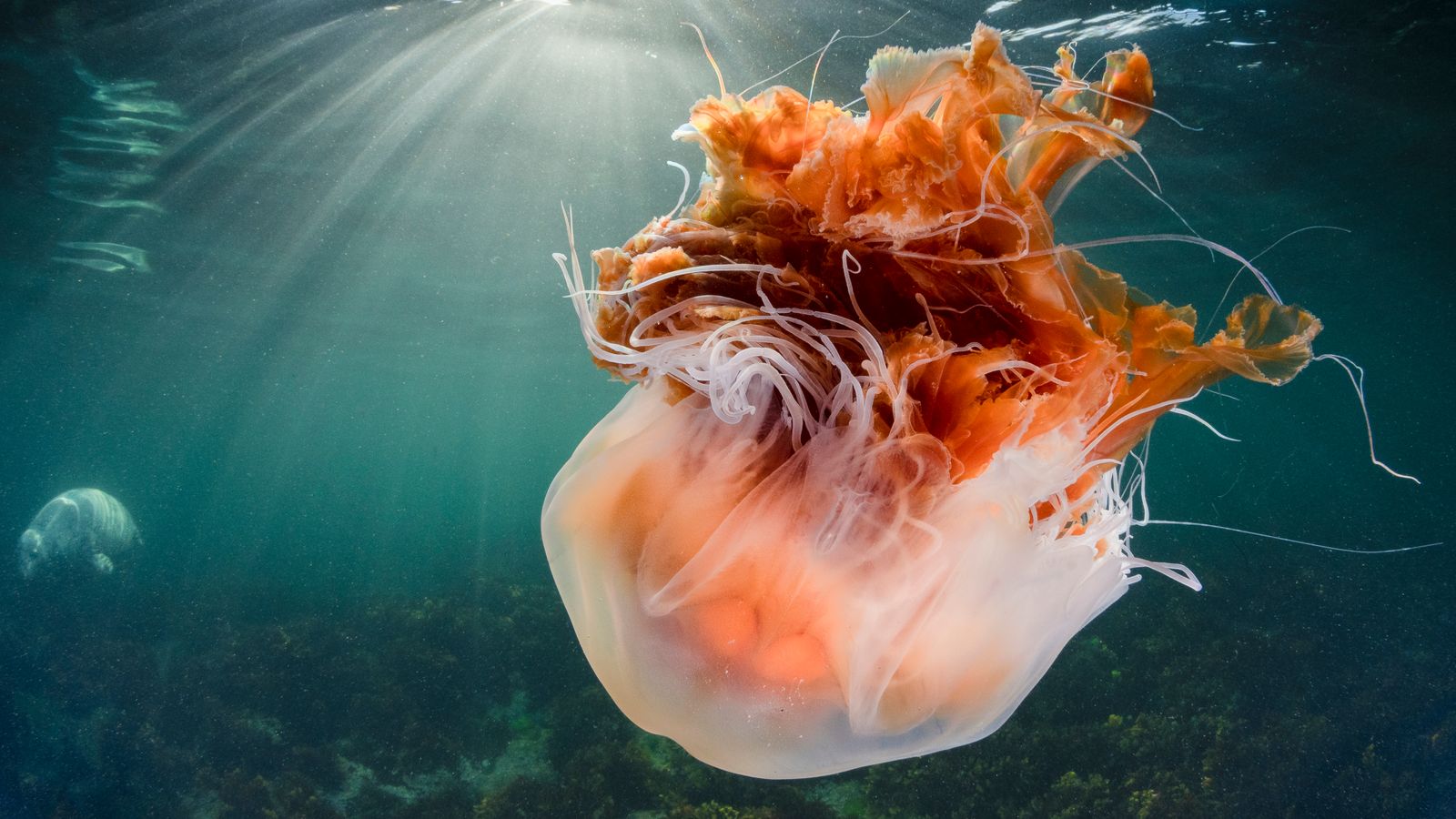Jellyfish sightings on UK coasts have surged 32%, according to data collected by the Marine Conservation Society (MCS).
Barrel jellyfish were most commonly seen, accounting for 437 of the 1,737 sightings between 1 October 2022 to 30 September 2023.
Barrel jellyfish are sometimes called ‘dustbin lid jellyfish’ as they can grow up to one metre in diameter.
But members of the public, who collect data for the survey, also spotted several lion’s mane, blue, and Portuguese man o’war species.
Jellyfish numbers vary each year, depending on changes in the environment like sea temperatures and storms, but they tend to bloom between spring and autumn.
June was the UK’s hottest on record, and brought a marine heatwave that increased sea temperatures by around 4C.
How many are reported to MCS also depends on “the ‘wow factor’ of jellyfish people encounter”, said Dr Peter Richardson, the organisation’s head of ocean recovery.
Hope in fight against lethal bird flu as scientists discover some species developing immunity
Chris Packham says Rosebank oil field approval is ‘abject madness’ during protest outside Defra
Record number of Asian hornet sightings in UK – as report highlights huge worldwide cost of invasive species
“This year seems to have been a particularly good year for barrel jellyfish – one of our chunkiest jellyfish species that can occur in mind-boggling numbers when conditions are favourable,” he said.
“It’s only by observing trends over many years that we can start to suggest reasons for change.”
Jellyfish are regarded as indicator species, signalling changes in the ocean, such as warming water, over time.
“Research has suggested that an increase in some jellyfish numbers around the UK could be related to climate change, however, currently there isn’t enough evidence to make this link,” MCS said.
Its Wildlife Sightings programme, the annual results of which were published today, collects long-term data to create a reference point for jellyfish trends in UK waters.
Watch The Climate Show with Tom Heap on Saturday and Sunday at 3pm and 7.30pm on Sky News, on the Sky News website and app, and on YouTube and Twitter.
The show investigates how global warming is changing our landscape and highlights solutions to the crisis.








